3D scanning and printing technology is rapidly transforming the way we learn and teach in schools. With the rise of affordable and easy-to-use 3D scanning equipment like the Einstar 3D scanner, educators and students are exploring new ways to create and learn. At the Alfonso Balzico Middle School in Cava de' Tirreni, Italy, information technology teacher, Professor Pietro Balzano, is using 3D scanning and printing technology to engage students and connect them with their local history.
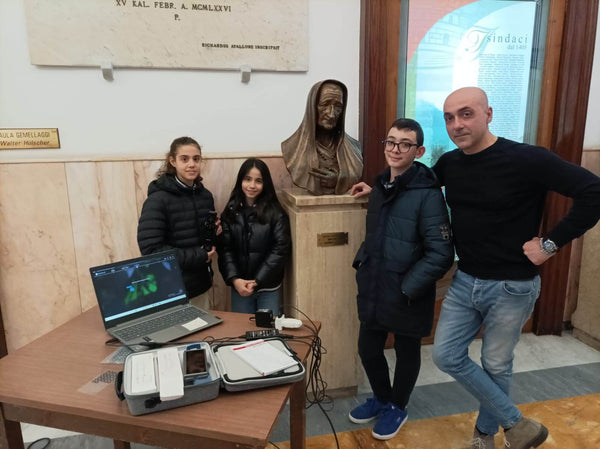
Pietro Balzano and his students: Alfonso , Chiaraand Gloria
Name: Professor Pietro Balzano, Alfonso Balzico middle school
Type: Education, school
Location: Cava de' Tirreni, Italy
Goal: Gain experience with 3D scanning and printing techniques while producing objects of cultural and educational value for their community.
Need:
● To expose the students to innovative 3D technology and give them hands-on experience with it
● To produce replicas of important cultural and historical monuments and figures from their city of Cave, helping preserve and spread knowledge of the city's heritage
Solutions:
SHINING 3D Einstar 3D scanner
3D PLA printers
Scanning Historical Stutues
One of the first projects undertaken by Professor Balzano and his 6th-grade students was the scanning and printing of a bronze bust of Alfonso Balzico located at the school's entrance. Alfonso Balzico was a 19th century sculptor from Cava de' Tirreni, and his work is displayed at churches, museums, and public spaces throughout Italy. Using the Einstar 3D scanner and 3D printers that work with PLA, Balzano and his students were able to reproduce a high-quality digital model of the bust, which they then printed in 3D. The students had great success scanning the large bust and were impressed with the Einstar scanner's intuitive software that allowed them to easily edit and prepare the 3D model for printing.
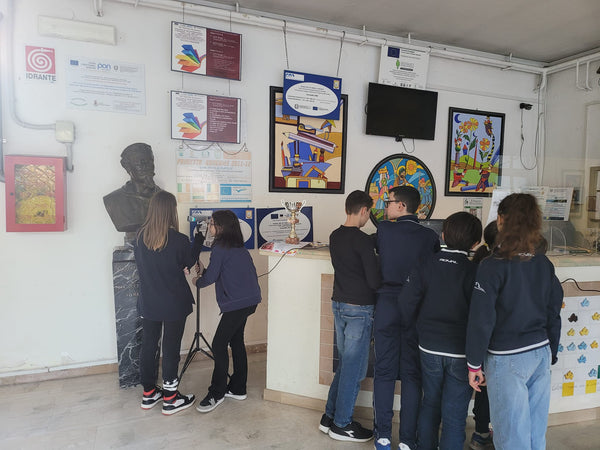 Students scanning the bronze bust of Alfonso Balzico
Students scanning the bronze bust of Alfonso Balzico
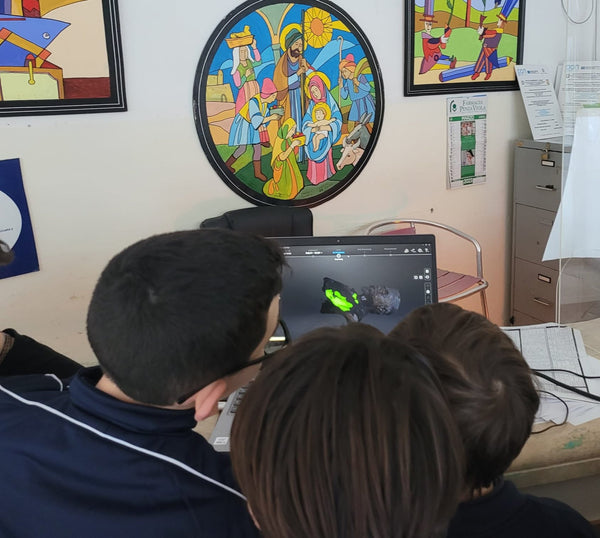
Students checking the scanning results
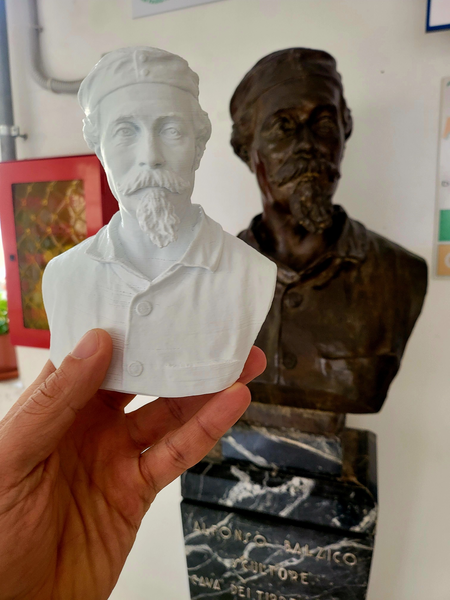
The 3D printed Alfonso Balzico model and the bronze bust one
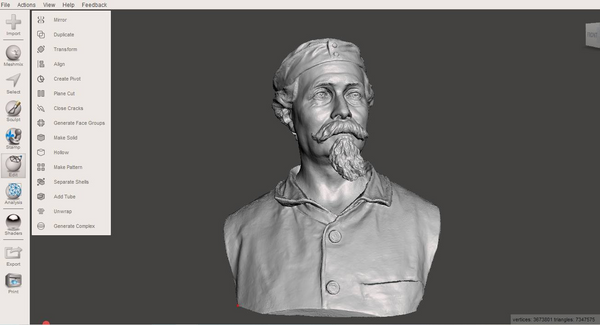
Scanning results of the bronze bust of Alfonso Balzico
Creating New Artifacts
Encouraged by their first project, Balzano and his students embarked on scanning an important historical figure in Cava de' Tirreni - Mamma Lucia. Lucia Pisapia Apicella (1887-1982), aka. Mamma Lucia, was known for her work as a philanthropist and for her contributions to the community during World War II. Obtaining approval from the school principal and top management of Palazzo di Città, Balzano and his students scanned the bust of Mamma Lucia, present in the hall of honor of Palazzo di Città. Using the Einstar 3D scanner and 3D printers, they were able to create a high-quality digital model of the bust, which they then printed in 3D.
 The scanning process of the Mamma Lucia statue
The scanning process of the Mamma Lucia statue
The students were able to show the fruits of their work and study, displaying the two busts of Alfonso Balzico and Mamma Lucia. The replica busts of the historical figure printed by the students measured 30 cm and captured intricate details. Balzano notes that the scanning and printing process was easy enough for his 11-year-old students to learn. The Einstar scanner's software also simplified editing and allowed them to directly print quality 3D models. This educational project allowed students to engage with local history through technology and develop new technology skills.
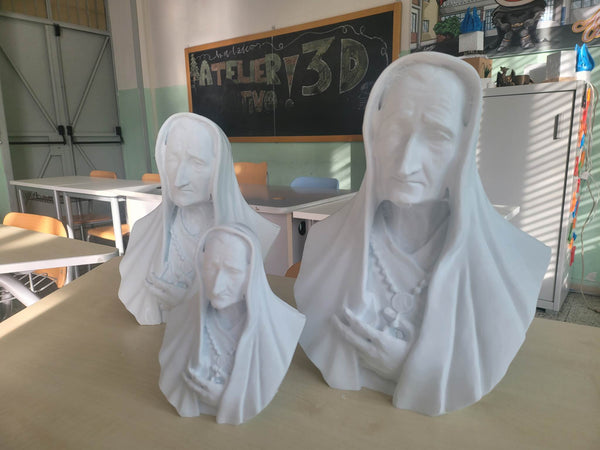 3D printed models of Mamma Lucia in PLA
3D printed models of Mamma Lucia in PLA
Looking to the Future
Balzano and his students are already looking beyond the first works created with the Einstar 3D scanner. They plan to scan a dolphin in the fountain in Piazza Vittorio Emanuele III to make a miniature monument, this time with wooden material, using a milling machine. They also plan to create other monuments in wood. With the Einstar 3D scanner, Balzano and his students have unlocked a world of possibilities in creating and learning.
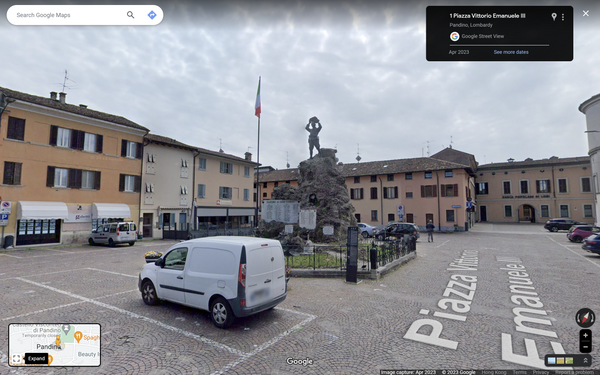
Piazza Vittorio Emanuele III (Photo source: Google Map Street View)
Conclusion
The Einstar 3D scanner is an affordable and easy-to-use tool that offers numerous possibilities for educators and students in the field of 3D scanning and printing technology. By scanning and printing historical artifacts and creating new ones, students can learn about history, art, and science in new ways.
More about their project: I cavesi illustri “rivivono” con la stampa 3D




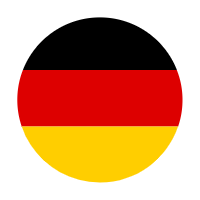




Leave a comment
All comments are moderated before being published.
This site is protected by hCaptcha and the hCaptcha Privacy Policy and Terms of Service apply.